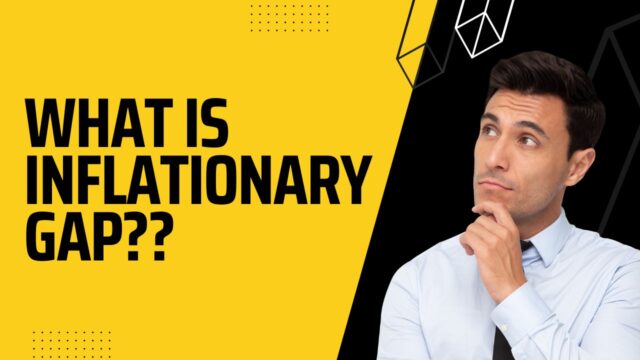
What is the inflationary gap and what factors contribute to it
The inflationary gap occurs when there is more money chasing after goods and services than there are goods and services available. This often leads to an increase in prices, which in turn can lead to higher levels of inflation. There are a number of factors that can contribute to the inflationary gap, such as economic growth, government spending, and money supply.
When the economy is growing quickly, businesses may find it difficult to keep up with demand, leading to higher prices. Government spending can also contribute to the inflationary gap by putting more money into circulation. Finally, if the money supply increases faster than the underlying level of economic activity, this can also lead to inflation. While the inflationary gap can be a challenge for policymakers, understanding the factors that contribute to it can help to mitigate its effects.
How does the inflationary gap impact economic growth
The inflationary gap is the difference between the actual and desired levels of economic growth. When the economy is growing too slowly, the inflationary gap is negative. Conversely, when the economy is growing too quickly, the inflationary gap is positive. The inflationary gap can impact economic growth in a number of ways. For example, if the inflation rate is higher than the desired level of economic growth, this can lead to higher interest rates and increased borrowing costs.
This in turn can lead to slower economic growth. Additionally, the inflationary gap can also impact employment levels. If businesses are struggling to keep up with rising costs, they may be forced to lay off workers, which can lead to higher unemployment levels and reduced consumer spending. Ultimately, the inflationary gap can have a significant impact on economic growth, both in the short and long run.
What policy options are available to policymakers to address the inflationary gap
In order to close the inflationary gap, policymakers have a few different options available to them. One is to increase government spending in order to stimulate economic activity and reduce unemployment. Another option is to reduce taxes in order to encourage consumption and investment. Finally, the central bank can raise interest rates in order to discourage borrowing and slow the growth of the money supply. Each of these options has its own risks and benefits, and it is up to policymakers to decide which course of action is best for their particular situation. By carefully considering all of their options, policymakers can develop a plan to close the inflationary gap and help ensure economic stability.
Are there any unintended consequences of these policy options
When choosing between different policy options, it is important to consider not only the intended consequences but also the potential for unintended consequences. Any given policy choice is likely to have both intended and unintended effects, and it can be difficult to predict which effects will predominate. For example, a policy designed to increase employment may also lead to inflationary pressures in the economy.
Similarly, a decision to reduce taxes may cause the government to cut back on important social services. As a result, policymakers must carefully weigh the costs and benefits of each option before making a decision. Only by taking into account both the intended and unintended effects of a policy can we hope to make the best possible choice.
What is the best way to address the inflationary gap?
One way to help address the inflationary gap is by using fiscal policy. This can involve either increasing government spending or decreasing taxes in order to increase the money supply and help spur economic growth. Another way to help address the inflationary gap is by using monetary policy. This involves manipulating interest rates in order to encourage or discourage lending and borrowing, which can help to cool or heat up the economy. Finally, another way to help address the inflationary gap is by using a combination of both fiscal and monetary policy. By implementing a mix of policies, it may be possible to more effectively address the issue and help improve economic conditions.


































